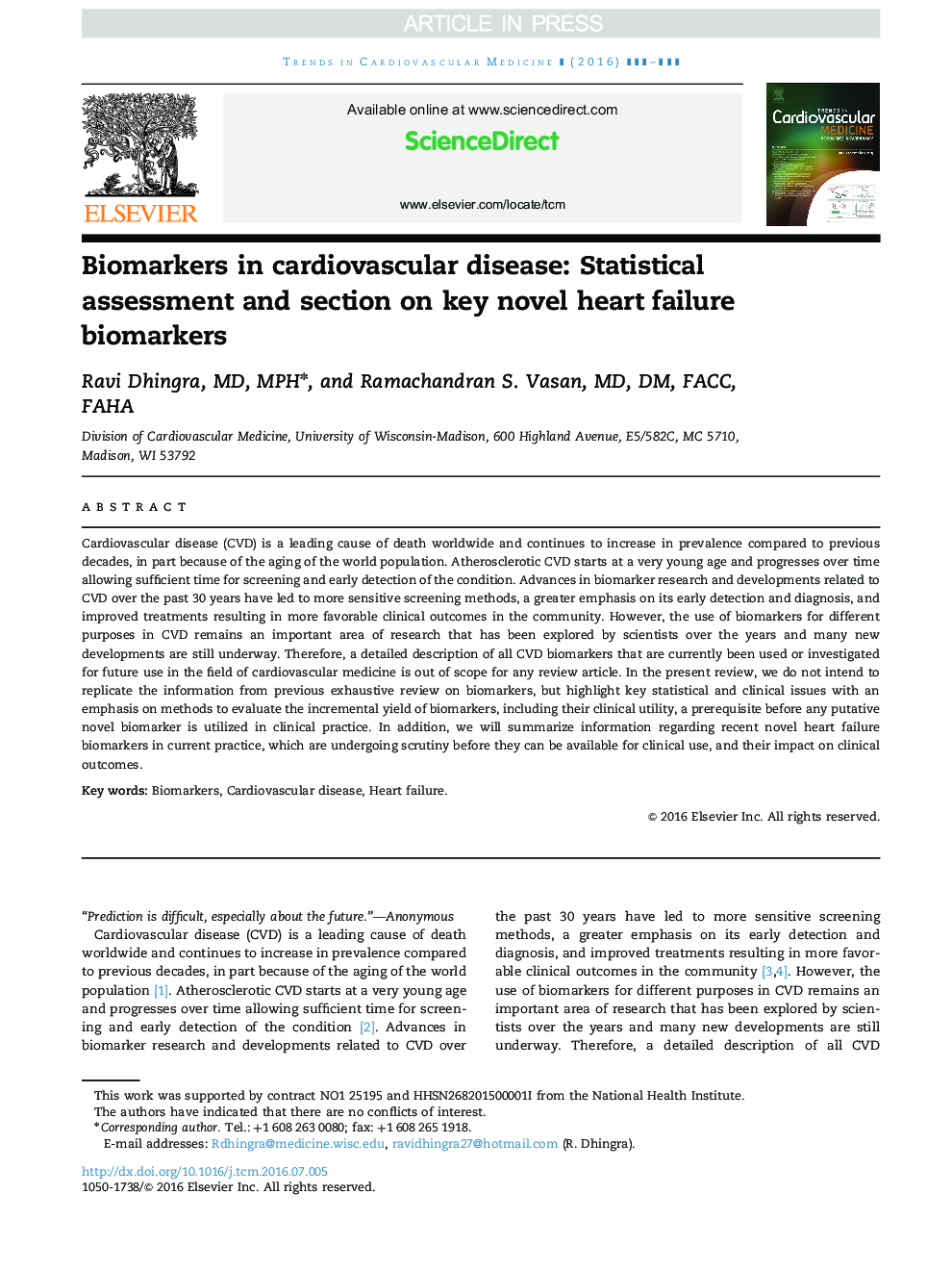| Article ID | Journal | Published Year | Pages | File Type |
|---|---|---|---|---|
| 5622289 | Trends in Cardiovascular Medicine | 2017 | 11 Pages |
Abstract
Cardiovascular disease (CVD) is a leading cause of death worldwide and continues to increase in prevalence compared to previous decades, in part because of the aging of the world population. Atherosclerotic CVD starts at a very young age and progresses over time allowing sufficient time for screening and early detection of the condition. Advances in biomarker research and developments related to CVD over the past 30 years have led to more sensitive screening methods, a greater emphasis on its early detection and diagnosis, and improved treatments resulting in more favorable clinical outcomes in the community. However, the use of biomarkers for different purposes in CVD remains an important area of research that has been explored by scientists over the years and many new developments are still underway. Therefore, a detailed description of all CVD biomarkers that are currently been used or investigated for future use in the field of cardiovascular medicine is out of scope for any review article. In the present review, we do not intend to replicate the information from previous exhaustive review on biomarkers, but highlight key statistical and clinical issues with an emphasis on methods to evaluate the incremental yield of biomarkers, including their clinical utility, a prerequisite before any putative novel biomarker is utilized in clinical practice. In addition, we will summarize information regarding recent novel heart failure biomarkers in current practice, which are undergoing scrutiny before they can be available for clinical use, and their impact on clinical outcomes.
Related Topics
Health Sciences
Medicine and Dentistry
Cardiology and Cardiovascular Medicine
Authors
Ravi MD, MPH, Ramachandran S. MD, DM, FACC, FAHA,
